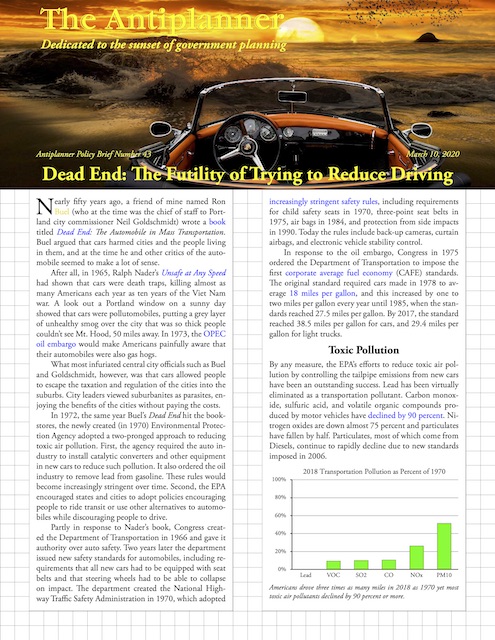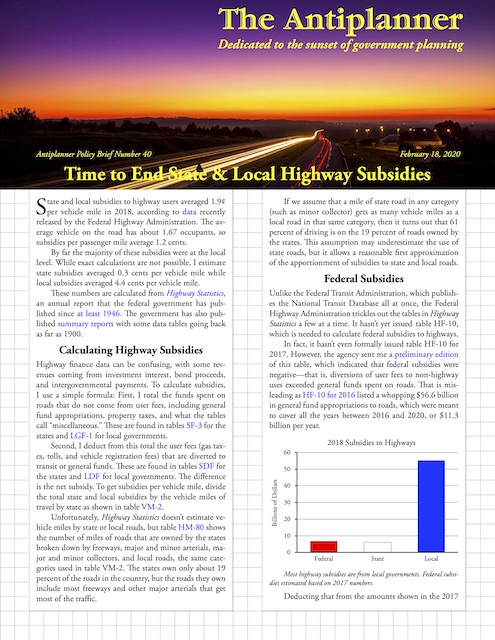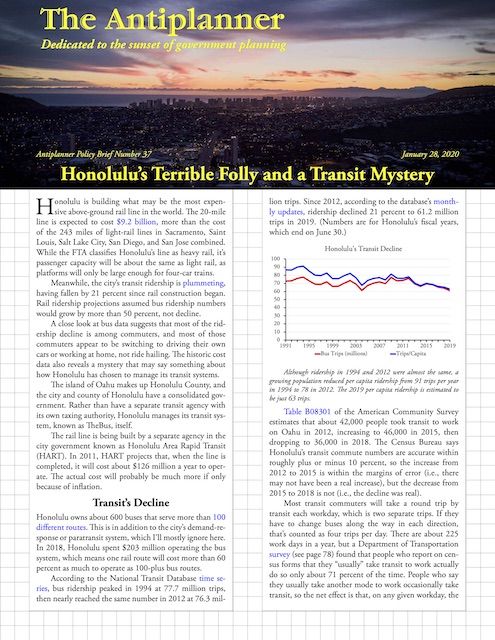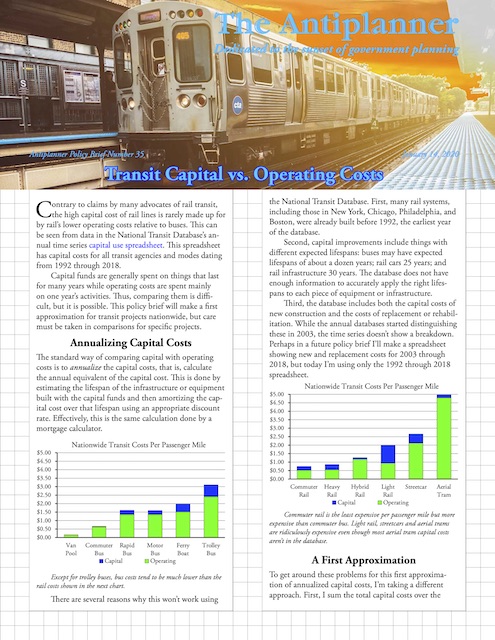We were warned. After September 11, 2001, historian Stephen Ambrose told us what to do.
“One of the first things you learn in the Army is that, when you and your fellow soldiers are within range of enemy artillery, rifle fire, or bombs, don’t bunch up,” wrote Ambrose in the Wall Street Journal. Now that the U.S. was under attack from terrorists, Ambrose urged the nation as a whole to learn the same lesson: “don’t bunch up.” “In this age of electronic revolution,” he noted, “it is no longer necessary to pack so many people and office into such small space as lower Manhattan.”
Ambrose’s advice was ignored. Manhattan’s population has grown by at least 100,000 people since 2001. Fitting 1.6 million people on a 23-square-mile island is only possible because of transit systems that force people to pack themselves into buses and railcars. Continue reading











